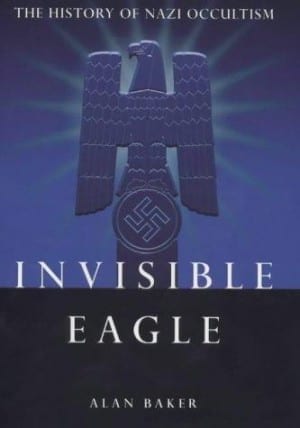Invisible Eagle and NS Occult History, by Alan Baker

While in Berlin, [Karl Maria] Weisthor worked with the author and historian Otto Rahn (1904-1939), who had a profound interest in medieval Grail legends and the Cathar heresy. In 1933, Rahn published a romantic historical work entitled Kreuzzug gegen den Gral (Crusade Against the Grail), which was a study of the Albigensian Crusade, a war between the Roman Catholic church and the Cathars (or Albigensians), an ascetic religious sect that flourished in southern France in the twelfth and thirteenth centuries. The Cathars believed that the teachings of Christ had been corrupted by the Church -and, indeed, that Christ was exclusively a being of spirit who had never been incarnated in human form.
This belief arose from their conviction that all matter was the creation of an evil deity opposed to God. Thus they claimed that the dead would not be physically resurrected (since the body was made of matter and hence evil) and that procreation itself was evil, since it increased the amount of matter in the Universe and trapped souls in physicality. (13) The Cathars were eventually destroyed by Catholic armies on the orders of Pope Innocent III in the first decade of the thirteenth century.
As Levenda notes, Catharism held a particular fascination and attraction for Himmler and other leading Nazis. ‘After all, the very word “Cathar” means “pure,” and purity -particularly of the blood as the physical embodiment of spiritual “goodness” - was an issue of prime importance to the SS.’ (14) Just as the Cathars had despised the materialism of the Catholic Church, so the Nazis despised Capitalism, which they equated with the ‘excesses of the Jewish financiers that - they said - had brought the nation to ruin during the First World War and the depression that followed’. (15) The Cathar belief that the evil god who had created the material Universe was none other than Jehovah provided additional common ground with Nazi anti-Semitism. Ritual suicide was also practised by the Cathars. Known as the endura, it involved either starving oneself to death, self-poisoning or strangulation by one’s fellow Cathars. Levenda makes anotherinteresting point about the Nazi fascination with Catharism:
[T]he Cathars were fanatics, willing to die for their cause; sacrificing themselves to the Church’s onslaught they enjoyed the always-enviable aura of spiritual underdogs. There was something madly beautiful in the way they were immolated on the stakes of the Inquisition, professing their faith and their hatred of Rome until the very end.
The Nazis could identify with the Cathars: with their overall fanaticism, with their contempt for the way vital spiritual matters were commercialized (polluted) by the Establishment, and with their passion for ‘purity’. It is perhaps inevitable that the Cathars should have made a sacrament out of suicide, for they must have known that their Quest was doomed to failure from the start. They must have wished for death as a release from a corrupt and insensitive world; and it’s entirely possible that, at the root of Nazism, lay a similar death wish. Hitler was surrounded by the suicides of his mistresses and contemplated it himself on at least one occasion before he actually pulled the trigger in Berlin in 1945. Himmler and other captured Nazi leaders killed themselves rather than permit the Allies to do the honors for them. ... [L]ike the Cathars whom they admired, the Nazis saw in suicide that consolation and release from the world of Satanic matter promised by this most cynical of Cathar sacraments. (16)
The thesis of Rahn’s book was that the Cathar heresy and Grail legends constituted an ancient Gothic Gnostic religion that had been suppressed by the Catholic Church, beginning with the persecution of the Cathars and ending with the destruction of the Knights Templar a century later. From 1933, Rahn lived in Berlin and his book and his continued researches into Germanic history came to the attention of Himmler. In May 1935, Rahn joined Weisthor’s staff, joining the SS less than a year later. In April 1936, he was promoted to the rank of SS-Unterscharfuhrer (NCO).
His second book, Luzifers Hofgesinde (Lucifer’s Servants), which was an account of his research trip to Iceland for the SS, was published in 1937. This was followed by four months of military service with the SS-Death’s Head Division ‘Oberbayern’ at Dachau concentration camp, after which he was allowed to pursue his writing and research full time. In February 1939, Rahn resigned from the SS for unknown reasons, and subsequently died from exposure the following month while walking on the mountains near Kufstein.r
Similar By Terms
|
(English)
|
(English)
|
(English)
|
(English)
|
|
(Deutsch)
|
(Español)
|
(English)
|
(English)
|








Recent comments
13 years 16 weeks ago
13 years 17 weeks ago
13 years 17 weeks ago
13 years 17 weeks ago
13 years 20 weeks ago
13 years 26 weeks ago